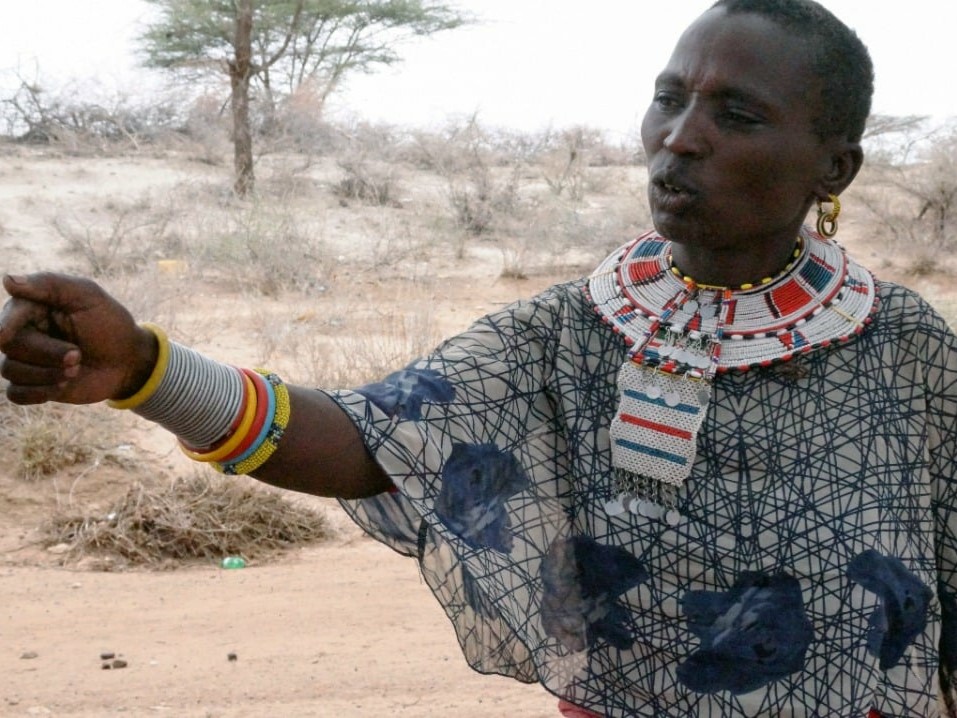News
Drought in Kenya proves a setback to eliminating female genital mutilation
- 03 February 2022
News
WEST POKOT COUNTY, SAMBURU COUNTY, Kenya – There are two rainy seasons in Kenya: The long rains in March, April and May and the short rains in October, November and December. The past three seasons have failed, and the next one is forecast to do the same. In some parts of the country, the severe drought – affecting more than 2.8 million people, including more than 730,000 women of reproductive age – has been declared a national disaster.
In this county bordering Uganda, pastoralist families are on constant move in search of water and pasture to keep remaining livestock alive. Displacement caused by disasters natural and manmade – and humankind contributes to climate change and extreme weather events – put vulnerable women and girls at greater risk of gender-based violence and harmful practices including female genital mutilation (FGM) and child marriage.
Local groups established by UNFPA partner and community-based organization I-Rep Foundation have reported a spike in the threat of female genital mutilation as young girls are pulled from school to join their nomadic families. “When drought occurs, it’s women and girls who are most affected as they have to queue day and night to pump water,” said I-Rep Foundation Director Domitila Chesang. “Girls can also be married off for bride price to help a family survive the drought. To do that, they have to first undergo FGM.”
Prevention efforts must adapt
Of the 23 counties (Kenya has 47) affected by drought, 14 are considered female genital mutilation hotspots with prevalence rates of up to 97.5 per cent. (The national prevalence rate is 21 per cent). UNFPA has increased support to partners such as I-Rep Foundation and World Vision Kenya in anti-female genital mutilation initiatives in these hotpots.
I-Rep Foundation is training more local surveillance groups on prevention and response and working with survivors and community and religious leaders to keep girls in schools even as their families travel further afield. “We have taken up advocacy for the set-up of mobile schools that are adapted to the pastoralist way of life so that girls do not miss out on education,” Ms. Chesang said. “When they spend time learning, the risk of undergoing FGM is reduced.”

World Vision Kenya is conducting intergenerational dialogues on the negative effects of female genital mutilation and child marriage, forming child protection clubs in schools and integrating economic approaches such as teaching beadwork so early marriage is not a default solution to alleviating financial hardship in drought-affected female genital mutilation hotspot Samburu County. According to World Vision Kenya gender and development technical specialist George Ndung’u, dialogues with reformed circumcisers, religious leaders and elders have advanced the end of female genital mutilation. Lewkin is a former cutter in Ntilal Village. She refuses any parent who asks her to perform the ritual on their daughter. “Most women do not know that some of the health issues they face are directly linked to FGM,” Lewkin said. “They are ignorant, just as I was before attending learning sessions that led me to denounce FGM.”
While it has been banned in Kenya since 2011, the harmful practice persists. According to a UNFPA report, about 813,159 girls in Kenya were at risk of undergoing female genital mutilation between 2015 and 2030. In some drought-affected pastoralist or farmer communities, the prevalence remains very high, especially among the Somali (94 per cent), Samburu (86 per cent), Kisii (84 per cent) and Maasai (78 per cent) communities. The prevalence is more common among women who live in rural areas (25.9 per cent) than those in urban areas (13.8 per cent).
Girls in families who depend on the land for survival are more casualties of enduring drought, their health compromised like parched earth, the end of female genital mutilation as elusive as a downpour.